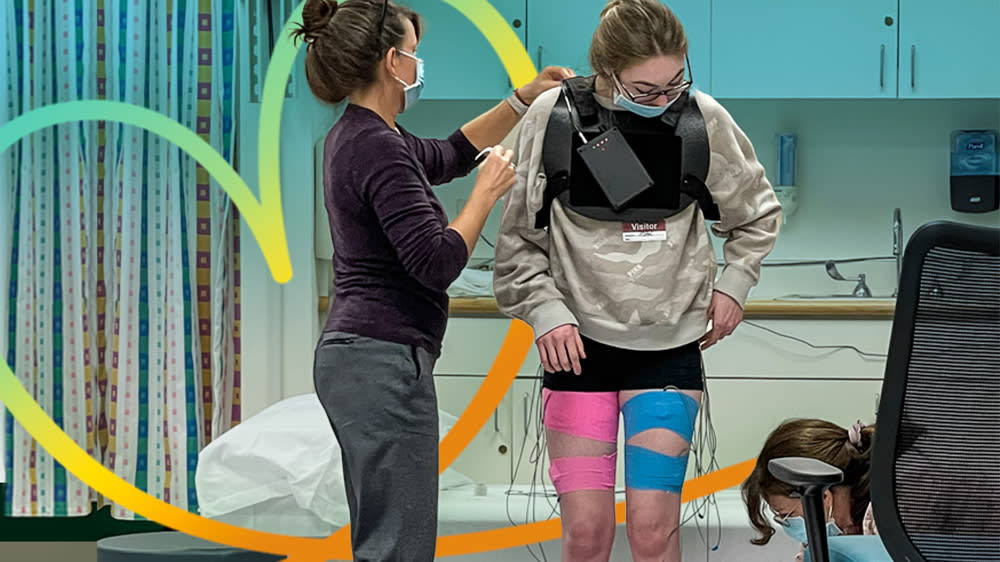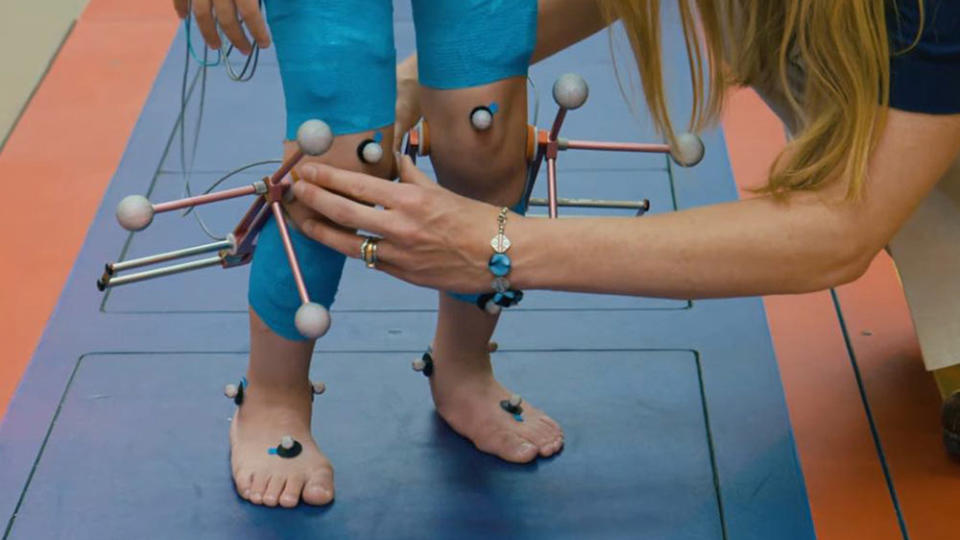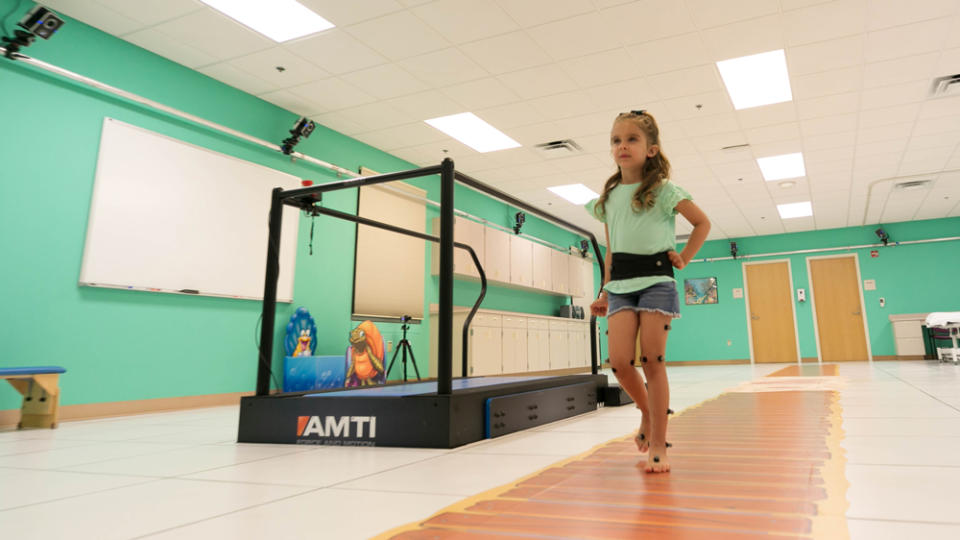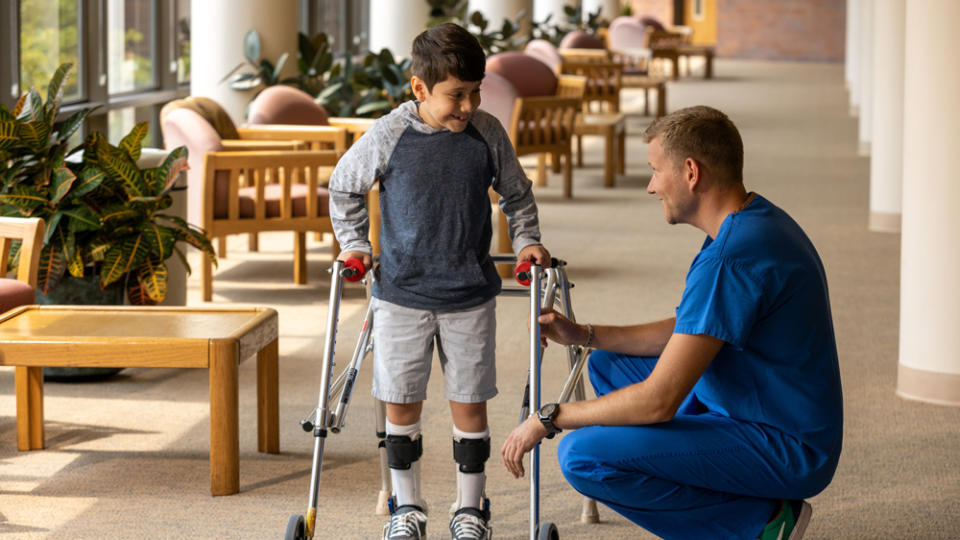Ushering in a New Era of Hope

Contributors to this leading research hospital are transforming kids’ lives directly — and redefining the standard of care for generations to come--.
Some 15 years ago, when Erika noticed her 1-year-old daughter, Payton, had a gait that seemed off, she turned to Shriners Children’sTM for help. The experts there diagnosed the problem as spastic cerebral palsy, which affects muscle tone, movement, and coordination. The condition can make it challenging to speak, stand, or even sit up.
Payton went in for her first motion analysis study when she was 7 years old. Three-dimensional imaging revealed that a tendon-lengthening surgery would improve her gait. And the operation did just that. Now, nearly a decade later, Payton participates in multiple sports, including competitive cheerleading. She runs, tumbles, and flips just like her teammates.
Such outcomes are only possible with the right treatment and identifying it demands precise data. The good news is that for kids with scoliosis, limb discrepancies, neuromuscular disorders, and even sports injuries, the latest innovations in motion analysis promise capabilities even greater than those that changed the course of Payton’s life a decade ago.
More from Robb Report

One of those innovations is biplane fluoroscopy imaging, developed by Karen Kruger, Ph.D., the motion analysis center director of Shriners Children’s Chicago, and Gerald Harris, Ph.D., director emeritus, in collaboration with Marquette University. By compiling and combining thousands of images, the technology renders a 3D video that reads like a real-time X-ray.
Doctors previously relied on limited data from physical examinations, traditional static X-rays, and MRIs. The enhanced precision offered by the new imaging is especially promising for areas of study that include foot differences, the use of orthotics, and longitudinal outcomes of surgical interventions.
These advances will create tangible opportunities for kids who might have missed out. From first steps to soccer games, better imaging puts more possibilities within reach.

New marker-less, augmented-reality camera systems carry out evaluations with significantly less time and staff. Ross Chafetz, PT, Ph.D., D.P.T., MPH, and corporate director of motion analysis centers at Shriners Children’s, sees many potential applications for this technology. “We can bring our lab into the community. For example, we could capture gait analysis in our Puerto Rico clinic. For sports, we could take the system to the high school to do injury-prevention testing.”
Sensors in a suit that patients wear throughout the day are another promising innovation. According to Chafetz, they furnish valuable data by capturing “how a patient truly walks during the day rather than how they walk under laboratory conditions.”

In the laboratory environment, new virtual-reality games can help measure outcomes of surgeries on upper extremities. Chafetz explains, “With these games, a surgeon can determine whether the patient has a better ability to reach for objects in their immediate space.”

These innovations vary in their focus. However, Vedant Kulkarni, M.D., attending pediatric orthopedic surgeon and director of the pediatric orthopedic fellowship program at Shriners Children’s Northern California, poignantly summarizes the significance they share: “The results of these studies allow us to have a level of precision in our understanding and decision making that each child deserves.”
This child-centric approach is integral to the Shriners Children’s mission and manifests throughout the nonprofit hospital system. Beyond carrying out world-class research, Shriners Children’s offers outstanding medical education and delivers innovative pediatric specialty care, regardless of the families’ ability to pay.
Learn more about Shriners Children’s and how you can power the transformative work they do, or make an impact immediately by donating today.
Donate Today
Sign up for Robb Report's Newsletter. For the latest news, follow us on Facebook, Twitter, and Instagram.